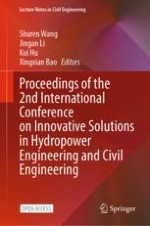1 Foreword
2 Material Composition
2.1 Granularity Composition
No. | Type | Depth (m) | Percentage grain size (%) | ||
|---|---|---|---|---|---|
Grit 2–0.075 | Silt 0.075–0.005 | Clay < 0.005 | |||
01 | Earth-filled | 2 | 7.25 | 49.11 | 43.64 |
02 | Mucky clay | 6 | 2.48 | 67.55 | 29.97 |
03 | Silty clay | 11 | 1.68 | 82.12 | 16.20 |
04 | Silt soil | 17 | 3.15 | 86.64 | 10.21 |
2.2 Mineral Components
No. | Ineral content ω (B)/10–2 | |||||||||
|---|---|---|---|---|---|---|---|---|---|---|
Q | fs | Pl | Cc | Do | I/S | I | K | Ch | Am | |
01 | 21 | 11 | 9 | 8 | 3 | 8 | 28 | 6 | 4 | 2 |
02 | 25 | 4 | 4 | 6 | 4 | 13 | 30 | 8 | 5 | 1 |
03 | 22 | 7 | 12 | 5 | 4 | 7 | 31 | 3 | 5 | 1 |
04 | 22 | 6 | 8 | 6 | 5 | 8 | 35 | 3 | 4 | 3 |
3 Microscopic Pore Characteristics
3.1 Mercury Injection Test
3.2 Analysis of Test Results
No. | 01 | 02 | 03 | 04 |
|---|---|---|---|---|
Depth (m) | 2 | 6 | 11 | 17 |
Porosity (%) | 40.35 | 34.45 | 32.56 | 30.22 |
